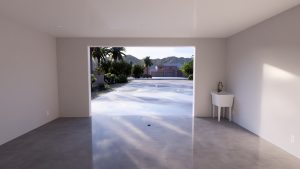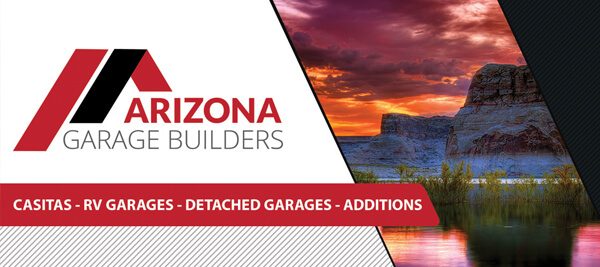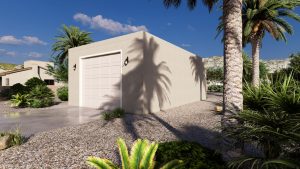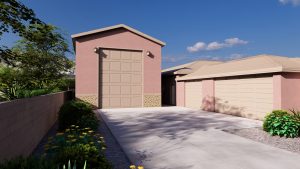
Owning an RV is a great way to explore the open road and enjoy the outdoors, but finding a secure and convenient place to store it when it’s not in use can be a challenge. A well-designed RV garage not only protects your vehicle from the elements but also provides additional storage space for gear and accessories. Here’s how you can optimize your garage for storing an RV, making it both functional and efficient.
1. Consider the Size and Layout
One of the most critical factors in designing an RV garage is ensuring that it’s large enough to accommodate your vehicle comfortably. RVs come in various sizes, so it’s important to measure your vehicle’s dimensions, including length, height, and width, before planning the garage.
• Height: RVs can be significantly taller than standard vehicles, so make sure your garage has a ceiling height of at least 14 feet. This allows room for roof-mounted accessories like air conditioning units or solar panels.
• Length: Measure the length of your RV, including any hitch or accessories on the back. A typical RV garage should be at least 40 to 50 feet long to accommodate most vehicles.
• Width: Ensure there is ample space on either side of the RV for you to walk around and access storage areas. A minimum width of 16 feet is recommended for ease of movement.
2. Install a Tall and Wide Garage Door
A standard garage door won’t suffice for an RV. You’ll need a door that’s both tall and wide enough to allow your RV to enter and exit without any issues. Consider installing a garage door that’s at least 12 to 14 feet tall and 10 to 12 feet wide.
• Automatic Door Opener: Investing in a high-quality automatic door opener that can handle the weight and size of a larger door is essential. This will make it easier to open and close the door without manual effort.
3. Opt for Durable Flooring
The weight of an RV can be considerable, so your garage floor needs to be strong and durable enough to handle it. Concrete is the most popular choice, but there are ways to further reinforce and protect your flooring:
• Epoxy Coating: Applying an epoxy coating to your concrete floor can help protect it from oil stains, water damage, and general wear and tear. It also makes cleaning up spills much easier.
• Rubber Mats: Consider placing heavy-duty rubber mats where your RV tires rest. These mats can help distribute the weight and prevent damage to the concrete floor.
4. Enhance Storage Options
Maximizing storage space is key to an efficient RV garage. Beyond storing the RV itself, you’ll want to have areas for tools, camping gear, spare parts, and other accessories.
• Overhead Storage: Utilize the vertical space in your garage by installing overhead storage racks. These are perfect for storing lightweight items like chairs, camping gear, and seasonal decorations.
• Wall-Mounted Shelves: Installing wall-mounted shelves can help keep your garage organized and make the most of the available space. Use them to store items that you need to access frequently.
• Cabinets and Lockers: Lockable cabinets are ideal for storing valuable tools and equipment securely. They also keep your garage looking tidy and free of clutter.
5. Incorporate Electrical and Plumbing Systems
Having easy access to electricity and water in your RV garage can be incredibly convenient for maintenance and preparation.
• Electrical Outlets: Install plenty of electrical outlets around the garage, especially near where the RV will be parked. This allows you to charge the battery, power appliances, or run tools easily.
• Water Supply: If possible, include a water hookup in your garage. This can be useful for washing the RV or filling its water tanks before a trip.
• RV Hookups: Some RV owners may want to install full RV hookups, including water, electricity, and even a sewer connection, allowing them to run their RV’s systems while it’s in storage.
6. Focus on Ventilation
Good ventilation is crucial in an RV garage to prevent moisture buildup and protect your vehicle from mold and mildew.
• Vent Fans: Install vent fans in the ceiling to circulate air and reduce humidity levels.
• Windows: Consider adding windows that can be opened to allow fresh air in and stale air out. Just be sure they’re positioned high enough to maintain security.
7. Secure Your RV Garage
Security is a top priority when storing an RV. A well-secured garage will give you peace of mind knowing your investment is protected.
• Security System: Install a security system with cameras and motion detectors to monitor your garage. Ensure it’s connected to your home’s main security system for continuous surveillance.
• Reinforced Doors and Locks: Use heavy-duty locks on all doors and consider installing reinforced garage doors to prevent break-ins.
Conclusion
Optimizing your garage for RV storage requires careful planning and consideration of size, layout, and features. By designing a space that accommodates your RV’s dimensions, enhances storage, and provides essential utilities, you can create a functional and secure environment for your vehicle. Whether you’re planning a custom garage build or retrofitting an existing space, working with professional garage builders like Arizona Garage Builders ensures your project is completed to the highest standards. Contact us today to start planning your ideal RV garage!


Get A Quote For Your New Garage
We prepare your estimate for your new construction project with absolutely no obligation or cost. We prepare all of the calculations and 3d renderings for your project so you know what Arizona Garage Builders can do for you. We will prepare your proposal online so you can see it from any device..



